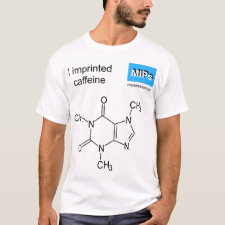
Authors: Mulyasuryani A, Tjahjanto RT, Andawiyah R
Article Title: Simultaneous Voltammetric Detection of Acetaminophen and Caffeine Base on Cassava Starch-Fe3O4 Nanoparticles Modified Glassy Carbon Electrode.
Publication date: 2019
Journal: Chemosensors
Volume: 7
Issue: (4)
Article Number: 49.
DOI: 10.3390/chemosensors7040049
Alternative URL: https://www.mdpi.com/2227-9040/7/4/49
Abstract: The new molecularly imprinted polymer (MIP) membrane based on cassava starch-Fe3O4-was developed to detect acetaminophen and caffeine simultaneously with the differential pulse voltammetry (DPV) method. Cassava starch was reacted with sodium tripolyphosphate (STPP) as a crosslinking agent, while acetaminophen and caffeine were added as templates. The Fe3O4 nanoparticles in the composite were added to increase the sensor's sensitivity. The experimental results show that the ratio between cassava starch:STPP:acetaminophen/caffeine in the mixture for MIP membranes influences the sensitivity of the sensor obtained. MIP membranes with the best sensitivity is produced at a mixture ratio of 2:2:1. The sensor performance is also affected by the pH of the solution and the type of buffer solution used. The sensor works very well at pH 2 in PB solution. Sensors produced from GCE modified with MIP membrane from cassava starch-Fe3O4 with acetaminophen and caffeine as templates have linear range concentrations, respectively, at 50-2000 μM and 50-900 μM. Sensor sensitivity was 0.5306 A/M against acetaminophen and 0.4314 A/M against caffeine with Limit of Detection (LoD), respectively, 16 and 23 μM. Sensor selectivity and sensitivity are better than those without MIP and can be applied for the determination of the content of acetaminophen in headache medicine, with an accuracy of 96-99% and with Relative Standard Deviation (RSD) 0.9-2.56%
Template and target information: dual template, acetaminophen, paracetamol, caffeine
Author keywords: Cassava starch, glassy carbon electrode (GCE), sodium-tripolyphosphate (STPP), electrochemical sensors, acetaminophen, caffeine



Join the Society for Molecular Imprinting

New items RSS feed
Sign-up for e-mail updates:
Choose between receiving an occasional newsletter or more frequent e-mail alerts.
Click here to go to the sign-up page.
Is your name elemental or peptidic? Enter your name and find out by clicking either of the buttons below!
Other products you may like:
 MIPdatabase
MIPdatabase









